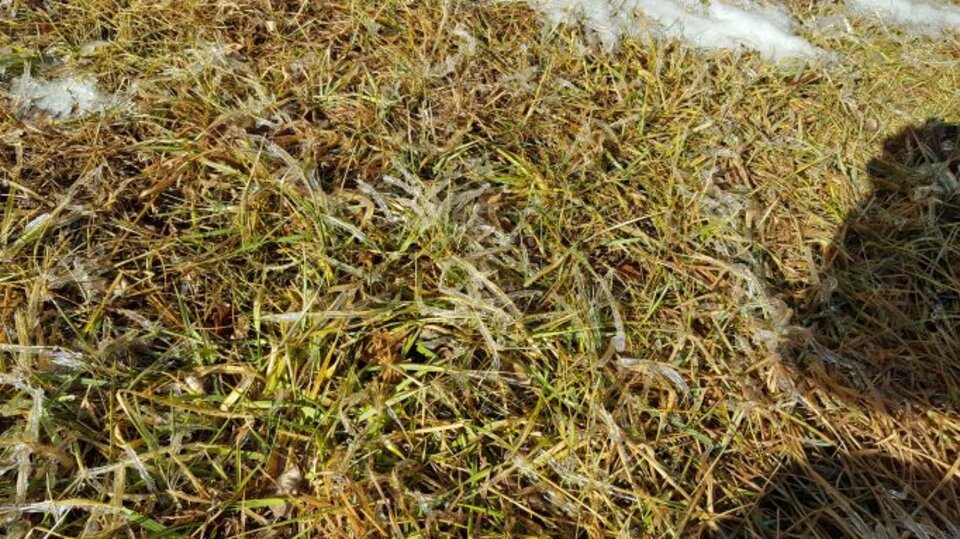Avoid Traffic on Frozen Turf

As I walk around my yard with my dog, I wonder about the impacts it has on my turf for the spring. Walking on frozen turf can have detrimental effects.
Damage from walking on Frozen Turf
During the spring and summer, we can walk on our lawns and turf fields with no damage. During the growing season, turf plants can recover from traffic through active regrowth. However, during the winter the turf is dormant and cannot recover from the damage until the spring. So, when we constantly walk in the same pattern, when we get the mail or take our dogs outside, the damage is recurring each time. This could be minor to our lawns that they can overcome in the spring, but in some cases it could kill the turf in those commonly walked-on areas requiring overseeding in the spring.
If you walk on frozen turf, you may notice footprints through the lawn when the lawn starts to green back up in the spring. This can even occur on cold mornings when there is frost on the turf. The lawn will show where you walked that morning when the frost fades and the rest of the lawn looks green and healthy.
Traffic on frozen or partially frozen soils can also increase compaction to the soil. Wet, or frozen, soils will compact together if it is walked on or if traffic drives over it. The moisture in the soil moves through soil pores, so if traffic moves over wet soils, it will smash out any air pockets that remained in the soil, making it more compact. This will also take a while to alleviate through time, aeration, and adding organic matter.
How to avoid or deal with the damage
The best way to avoid the damage to frozen turf is to avoid traffic. This includes walking on it, driving vehicles on it, and playing outside on the turf. If you can walk in different paths each time you go outside, that would be better than walking in the same location each time you go to get the mail or take the dog outside.
If you can’t avoid traffic on the frozen turf, you will likely have to reseed in the spring to get those areas to green back up. Mid to late April is a great time to overseed the lawn in the spring. Be sure to keep it well watered and don’t use a common preemergence herbicide like prodiamine or pendimethalin. If you plan to overseed, aerate extensively, then use a product containing topramezone or mesotrione instead. These specialty products used to be reserved for commercial turf use such as on golf courses or sports turf, but have now made their way to garden centers and hardware stores, be sure to ask the store clerk for help and read the active ingredient list carefully.
Deicers
Also, be careful when using deicers around your turf and landscape. Deicers can negatively affect plants, soil, concrete and carpet. Select deicers wisely and use them according to direction. Deicers applied to surfaces may run off and enter soil or be splashed onto nearby vegetation. These deicer salts reduce the availability of water to plants, which can increase water stress during spring and summer. This effect is referred to as chemical drought. Deicing products splashed onto foliage may burn and kill plants growing adjacent to roadways.
You can choose products that are less harmful to plants and cause less leaf burn in the spring. Choose products like beet juice, calcium chloride or calcium magnesium acetate which are less harmful to plants than sodium chloride. However, these safer products are more expensive and more difficult to find, so applying a light layer of deicing salts in combination with gravel or sand would be a good alternative to protect our plants. Also, try to avoid piling the snow up in the same location on the edge of your lawn each time it snows so the deicers aren’t always placed in the same spot on your landscape. Remember, deicers are not used to completely melt snow or ice, but to make their removal easier.
This article was reviewed by John Fech